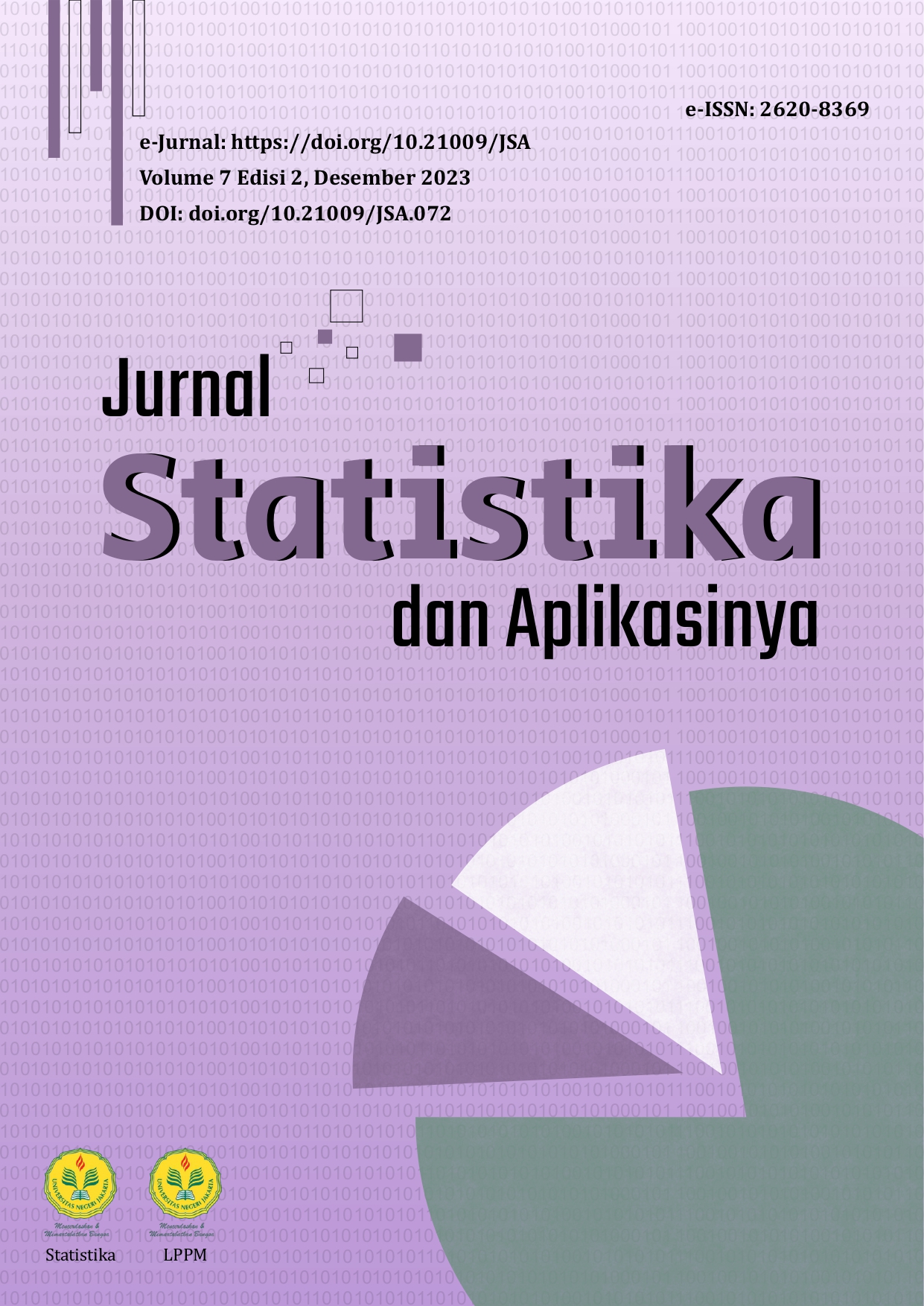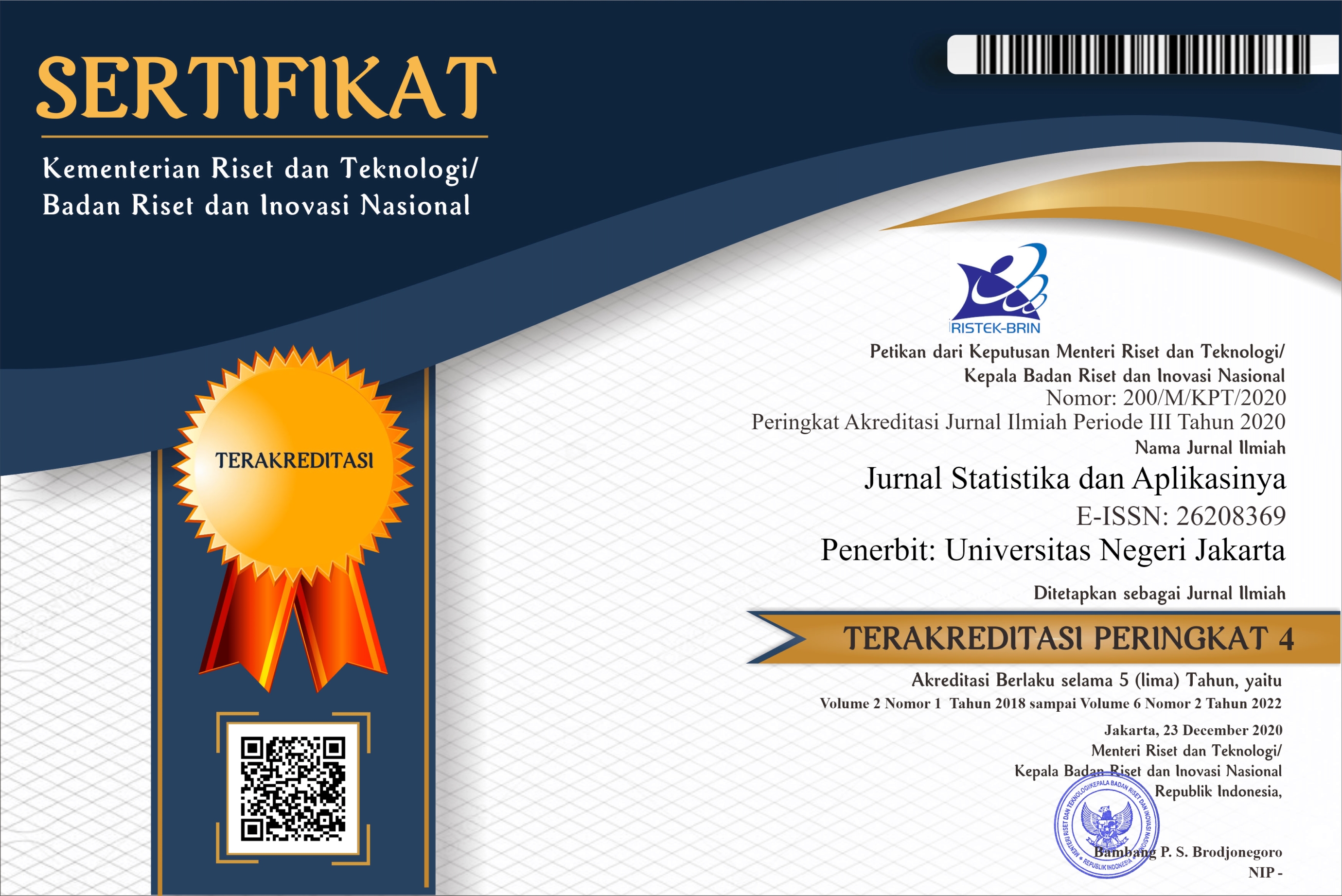Evaluasi Perbandingan Kinerja Algoritma Cheng and Church Biclustering Terhadap Algoritma Clustering Klasik K-Means untuk Mengidentifikasi Pola Distribusi Barang Ekspor Indonesia
DOI:
https://doi.org/10.21009/JSA.07204Keywords:
Clustering Analysis, K-Means Clustering, Cheng and Church BiclusteringAbstract
Clustering is a process of grouping data into several groups (clusters) so that data in one cluster has a homogeneous level of similarity and data between clusters has heterogeneous similarity. A common example of a clustering algorithm is K-Means Clustering. Compared with classical clustering algorithms, the biclustering algorithm is a two-dimensional data grouping process. The biclustering algorithm functions to find data submatrices, namely row subgroups and column subgroups that have high correlation. One example of a biclustering algorithm is Cheng and Church Biclustering (CC Biclustering). The aim of this research is to evaluate the performance of the biclustering algorithm against classical clustering algorithms. Analysis applied to CC Biclustering and K-Means Clustering to identify distribution patterns of Indonesian export goods in the period 2013 to 2022. Based on research results, the optimal scenario for the K-Means algorithm is scenario 2, that is the application of the 7 cluster K-Means algorithm with pre- processing data scaling. Meanwhile, the optimal scenario for the CC Biclustering algorithm is scenario 1, that is the application of the CC Biclustering algorithm with a tolerance value of 0.10 with data scaling pre-processing. However, from these two scenarios, based on the MSR/Volume value, it was concluded that the best scenario is scenario 1 in the application of the CC Biclustering algorithm which has an MSR/Volume value of 0.077.






